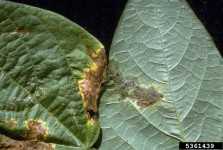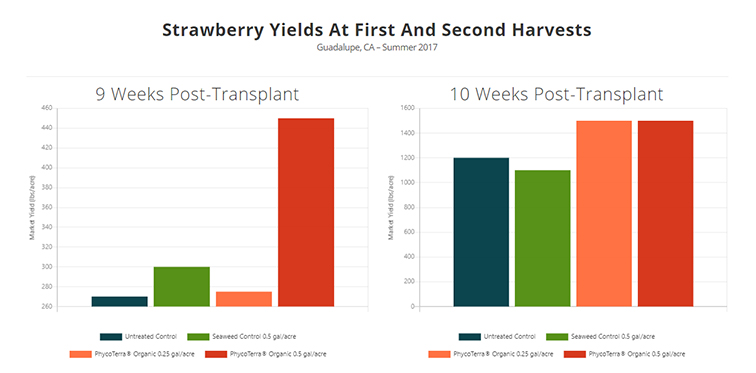Managing Blight In Beans

Common blight (Xanthomonas campestris pv. phaseoli) and halo blight (Pseudomonas syringae pv. phaseolicola) affect a variety of host plants including field and snap beans, lima beans, soy beans, hyacinth beans, and several other legumes. Both diseases present somewhat similar symptoms in the plant, but can be distinguished by several different markings on the pods and leaves.
David Langston, an Extension plant pathologist at the University of Georgia’s College of Agricultural and Environmental Sciences, provides some insight on the two diseases’ symptoms, causes, and methods of cultural and chemical control.
Symptoms of common blight are typically seen in warmer temperatures, (82-89˚F) with lesions on the pods and leaves. “Symptoms commonly appear as irregular shaped necrotic areas with a large yellow halo surrounding the lesions. The lesions often coalesce to form larger lesions that eventually will defoliate the plant,� Langston states.
On the pods, you’ll see water soaked spots, reddish in color, that turn brown and make the pods unmarketable.
Halo blight prefers cool weather (between 75˚F to 80˚F), and according to Langston, symptoms typically appear on leaves as a small necrotic spot, similar to a pin prick, surrounded by a very round chlorotic halo, which is more faint than common blight’s bright yellow halo. Pod symptoms are similar to common blight’s, including a small necrotic spot on the pod, however  there isn’t as much necrosis as with the other.
Langston warns, however, that both diseases may be misdiagnosed with rust since rust is a common foliar bean disease. “They have similar visible symptoms,� he explains, “but rust will have fungal pustules as opposed to just necrotic spots you’ll have with common and halo blight.�
Beware Of Wet Leaves
Rain and overhead irrigation can drive both common and halo blight epidemics more than any other trigger. “The weather conditions will probably affect the diseases more than anything — more than irrigation.� As far as when to irrigate your plants to avoid disease propagation,
he states that if you irrigate at night and the leaves are wet longer, there will be more disease than if you irrigated in the morning so the water level on the plants would be no more than a heavy dew.
As a result, scouting is important to determine if either disease is in your field. Scouting recommendations for both diseases include examining the lower and inner plant canopies — not just the outside or the tops of the plants. Langston also suggests looking around the edges of the field as bacteria can live on weeds located in this area and can spread inward.
Cultural And Chemical Control Tips
Langston offers six pointers on how to reduce the instances of these diseases in your bean fields.
- Use disease-free seed. As a first measure of cultural control, Langston tells growers to use certified disease-free seed, due to the fact that many bean diseases can be seed borne.
- Rotate crops. Crop rotation also is effective, and he suggests rotating crops such as corn, or any other non-legumes, two to three years away from beans.
- Avoid wet fields. Avoid driving or walking through wet fields, as the bacteria thrive in water and can be transferred that way.
- Control weed hosts. There are several weed hosts, like pigweed, which may harbor the pathogen.
- Find varieties resistant to halo blight. Several varieties resistant to halo blight are available, but Langston states there aren’t any he knows of resistant to common blight.
- Use copper fungicides. In the area of chemical controls, he says any copper fungicide will do, and the product can be sprayed on a seven to 10 day schedule, as a preventive measure. Langston says if the disease is noticed before it’s too advanced, remedial spray programs can be used. Unfortunately there’s really no effective control once the disease is established.
What is Langston’s final bit of advice to growers? “Just because you find the diseases in your field, it doesn’t mean it’s going to be a disaster,� he says. If caught early by means of thorough scouting, copper-based bactericides are typically very effective at eradicating both diseases.









